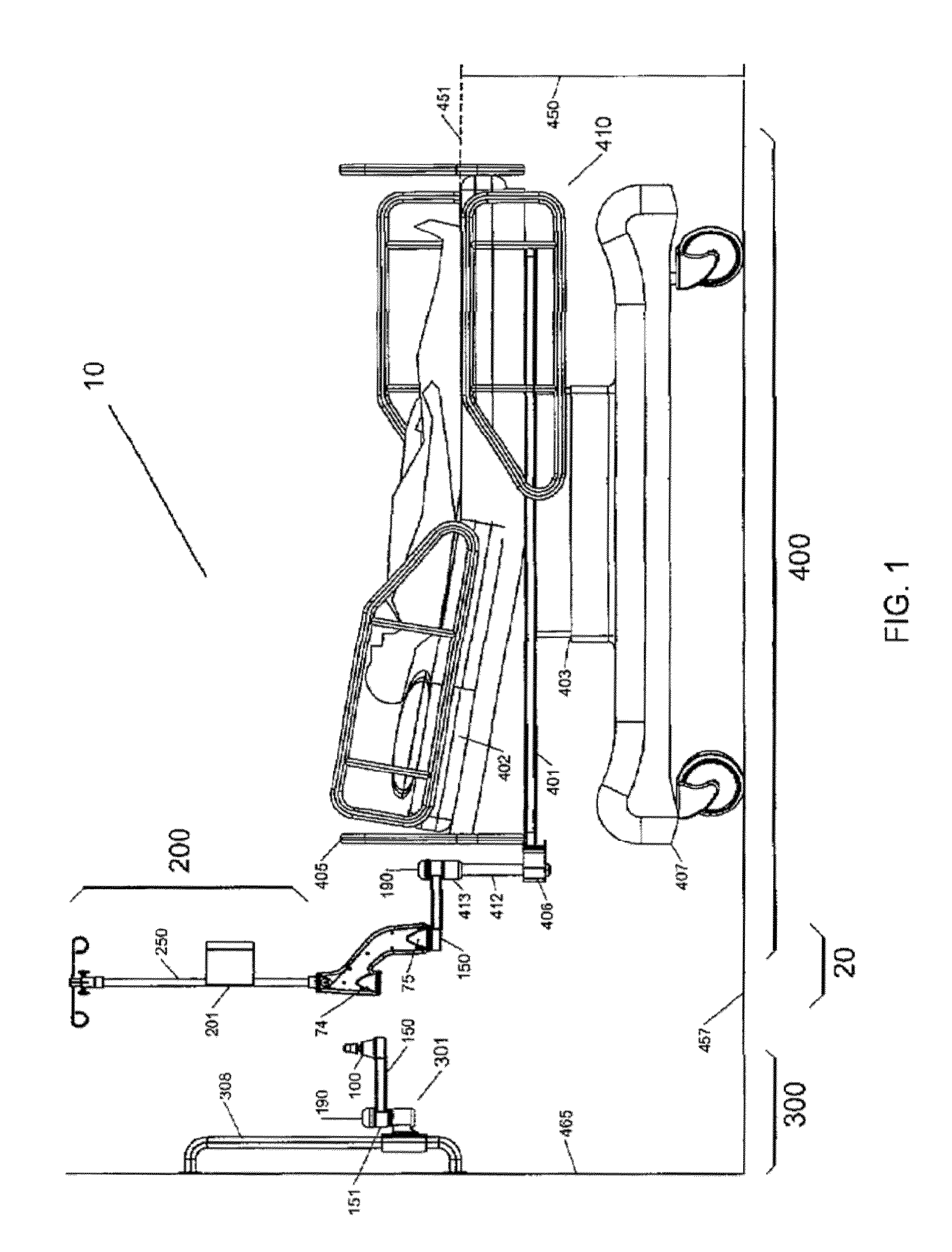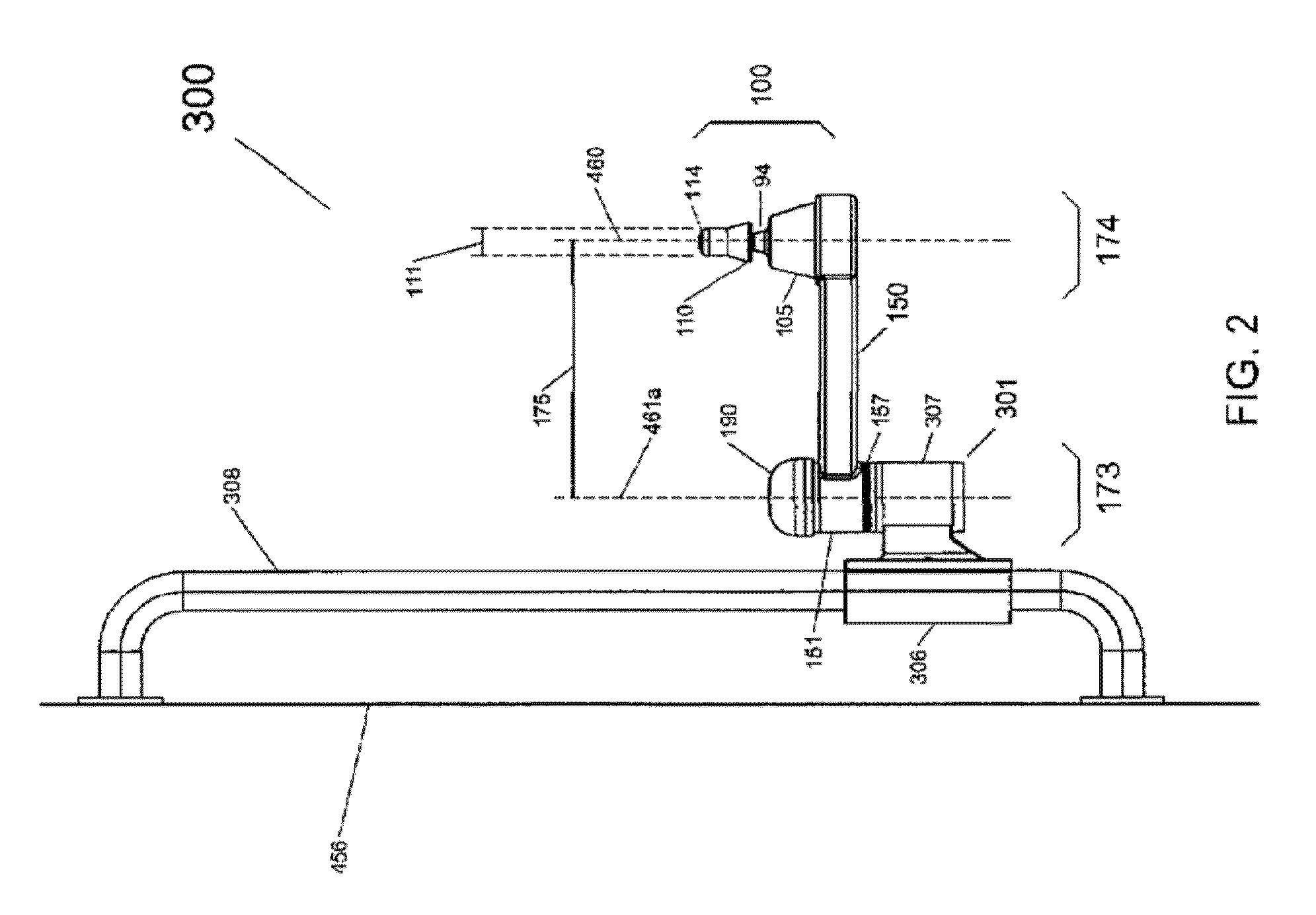Secure equipment transfer system
a technology of equipment transfer and secure connection, which is applied in the direction of machine supports, mechanical equipment, transportation and packaging, etc., can solve the problems of inability to provide a safety system to lock the support structure to either the mobile or stationary platform, and the technique typically proves hazardous, so as to prevent accidental disengagement of the transfer, reduce the cost of manufacturing, and reduce the effect of mechanical complexity
- Summary
- Abstract
- Description
- Claims
- Application Information
AI Technical Summary
Benefits of technology
Problems solved by technology
Method used
Image
Examples
Embodiment Construction
[0054]Now referring to the drawings, the equipment transfer system is shown and generally illustrated in the figures. As can be seen the principal component of the transfer system is a transfer device 20 that can be selectively supported and moved between a stationary support platform 300 and a mobile support platform 400 to facilitate the transfer of patient care apparatus 200 supported thereon.
[0055]Turning to FIG. 1, the transfer system 10 includes a stationary support platform 300, a mobile support platform 400 and a transfer device 20 that supports a patient care apparatus 200 and is capable of transferring the patient care apparatus 200 between a stationary support platform 300 and a mobile support platform 400 and vice-a-versa. Within the scope of the present invention the term “transfer” refers to transferring patient support equipment between stationary support platforms including walls, headwalls, ceiling-mounted or wall-mounted booms from various manufacturers, free-stand...
PUM
 Login to View More
Login to View More Abstract
Description
Claims
Application Information
 Login to View More
Login to View More - R&D
- Intellectual Property
- Life Sciences
- Materials
- Tech Scout
- Unparalleled Data Quality
- Higher Quality Content
- 60% Fewer Hallucinations
Browse by: Latest US Patents, China's latest patents, Technical Efficacy Thesaurus, Application Domain, Technology Topic, Popular Technical Reports.
© 2025 PatSnap. All rights reserved.Legal|Privacy policy|Modern Slavery Act Transparency Statement|Sitemap|About US| Contact US: help@patsnap.com



